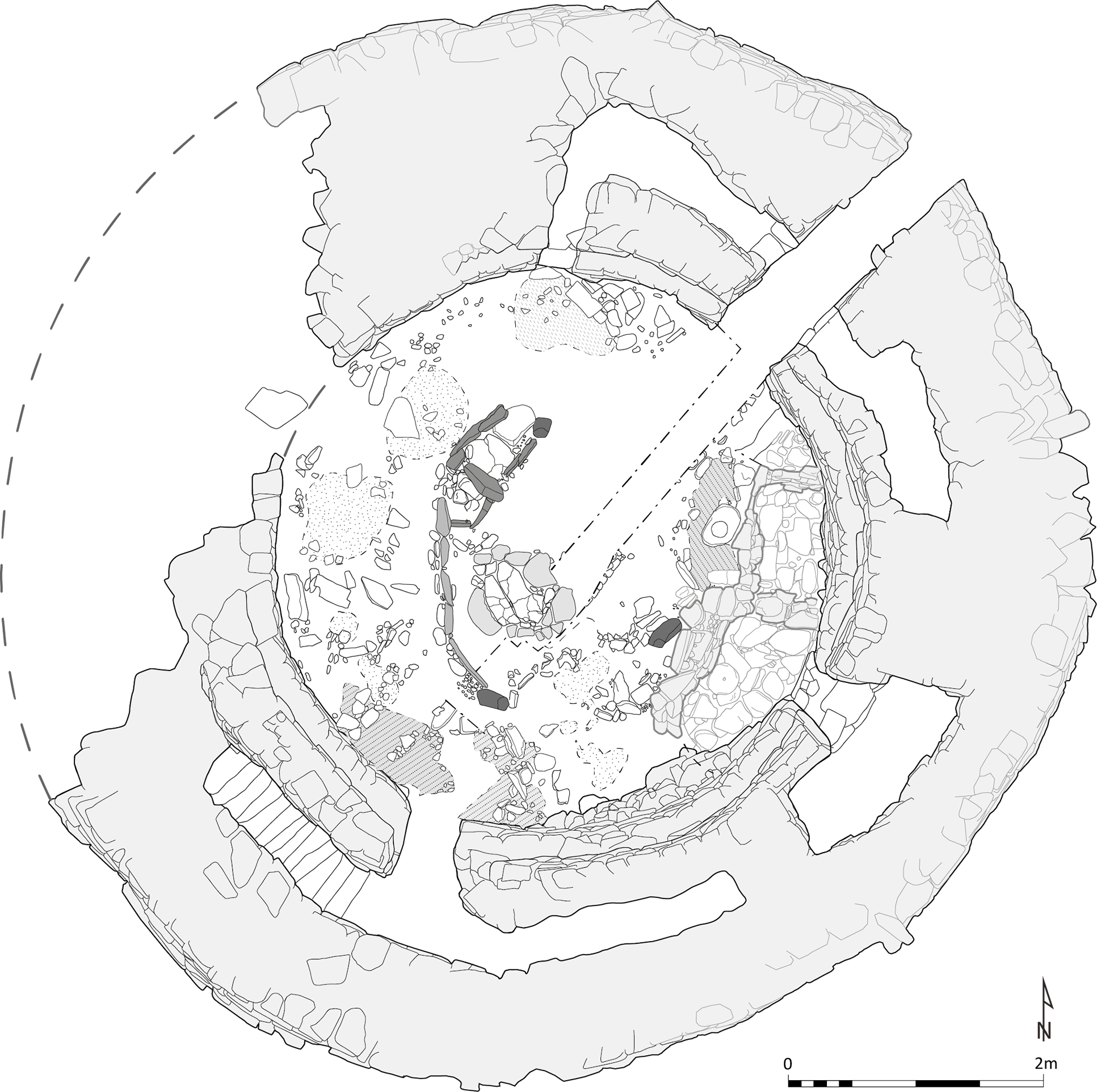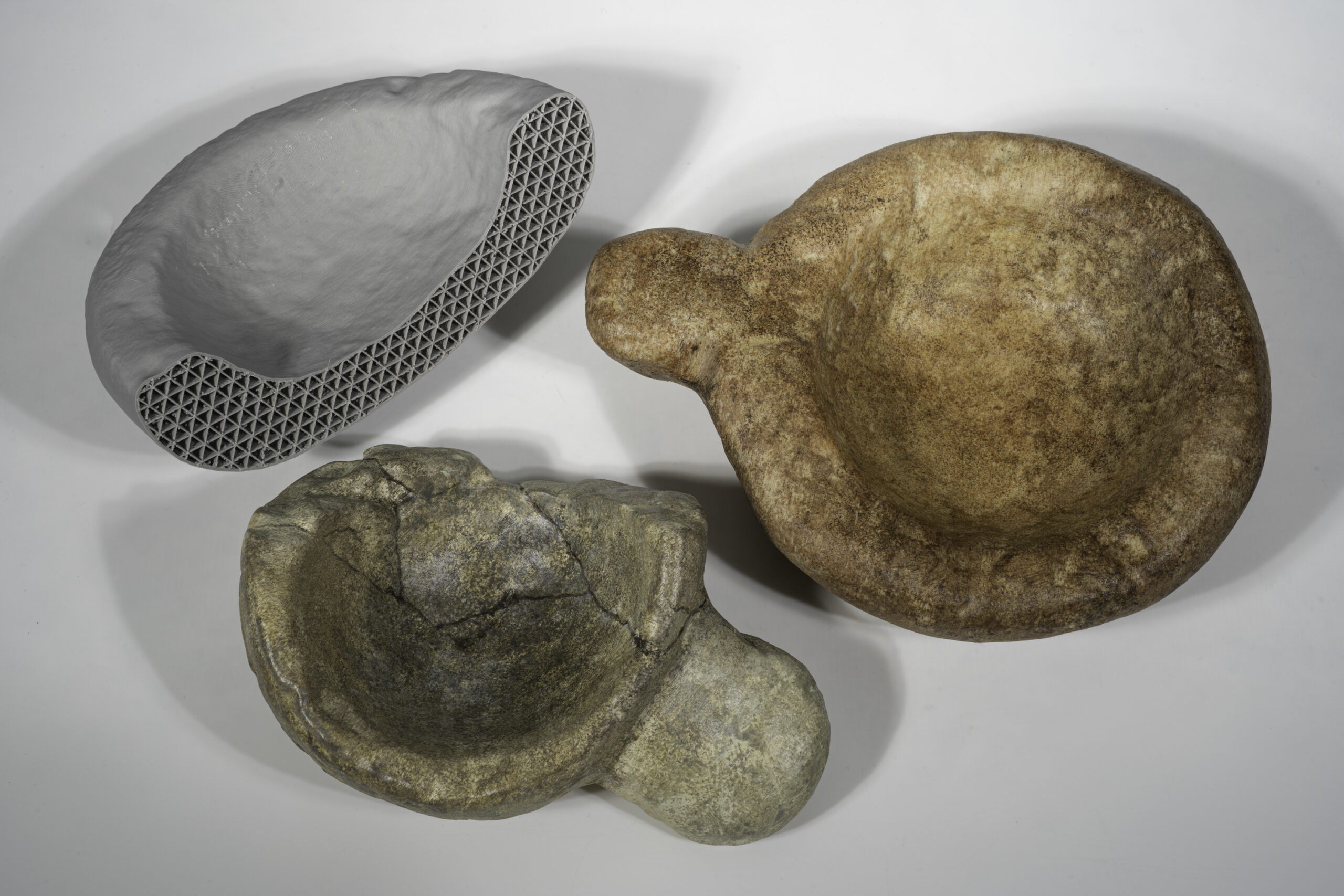A selection of objects was replicated using 3D printing technology so that they can be housed in a ranger hut close to the broch. Made of polymer composites, they are durable and can be exhibited without the need for climate-controlled conditions.
Many years of work by Historic Assynt to consolidate and conserve Clachtoll Broch led to full excavation of the site in 2017 with hundreds of artefacts retrieved during the work. The excavation at Clachtoll provided a snapshot of life in Assynt in the Iron Age.
The construction of a new ranger hut at Clachtoll Beach car park presented an opportunity to provide new information about the broch for visitors: information panels would tell the story of the broch and an exhibition window would house the excavated artefacts. The exhibition window, however, would not be climate controlled.
This meant it would not be appropriate for genuine artefacts, which would deteriorate in an environment of ever-changing light, heat and humidity. 3D printed replicas provided a solution. They look identical to the originals, but aren’t at risk of deterioration – and even if they were to deteriorate, they could be replicated again… and again, and again!
A range of objects – from pottery and stone to bone, were selected for high-resolution 3D recording. Using photogrammetry, we were able to create digital replicas of objects excavated at Clachtoll Broch.
Explore the interactive image of the broch to see the artefacts based on where they were found, or head to the bottom of the page to view the 3D gallery.

Digital recording has been used in archaeology for a while, but with development in technology, possibilities for augmenting archaeological processes with digital tools have advanced. Finds specialists and conservators can now analyse high-accuracy 3D models and use this digital record as a non-invasive method facilitating understanding of artefacts’ condition and their past. Interactive 3D models can be published online, and with a layer of storytelling, used for outreach purposes.
A new area that AOC is exploring is 3D printing: the tactile appeal of a 3D printed artefact can enable visitors to develop a more personal connection with places and history – they are experiencing the past through artefacts which they wouldn’t be able to touch otherwise. Another side of 3D printing technology, especially in recent years, is making heritage more inclusive and accessible for people with visual impairments: dedicated handling kits are gaining more popularity across cultural institutions in the UK and beyond!
Working with Barclays Eagle Labs at CodeBase in Edinburgh, we printed several artefacts. Ana Aranda (Eagle Labs Engineer in Edinburgh) advised our team on the best materials for this purpose. We decided to use biodegradable Polylactic Acid (PLA) filaments infused with stone, metal or ceramic powder. These composites are heavier than standard PLA, providing a more tactile feel while handling. The ‘raw’ 3D prints were then finished and painted by hand, to imitate the look of the original artefacts.
The results, along with images of the Iron Age objects and photographs taken during the printing process, are presented in the gallery below:













